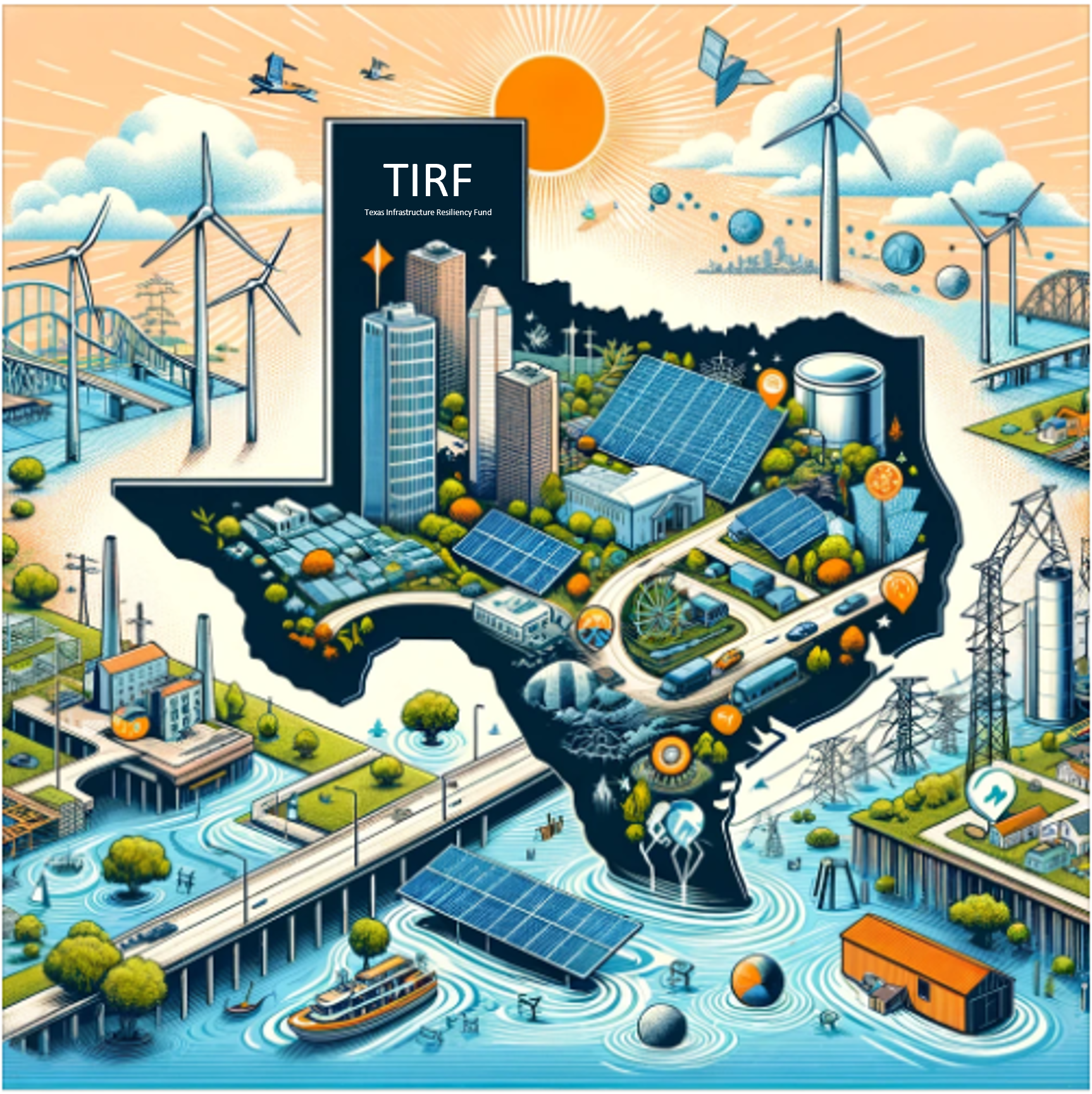The Texas Infrastructure Resiliency Fund: Empowering Businesses with Onsite Microgrids

In the wake of increased climate-related incidents and the growing need for sustainable energy solutions, the Texas Infrastructure Resiliency Fund (TIRF) stands out as a pioneering initiative. This fund, established by the state of Texas, is specifically designed to bolster the resilience of critical infrastructure businesses and manufacturers against power outages and energy disruptions. Of the $10 billion fund, $1.8 billion has been earmarked for microgrid projects.
Microgrids are part of broader effort to improve energy resilience in Texas, playing a vital role in ensuring a continuous power supply for critical facilities during outages. Onsite microgrids in Texas can access funding through the Texas Infrastructure Resiliency Fund via a specific allocation within the state’s energy funding structure. In 2023, Texas voters approved Proposition 7, which allocated $10 billion for various energy projects, including a significant portion for microgrids. Out of this amount, $1.8 billion was specifically designated for microgrids. These funds are intended to enhance the state’s power resilience and are a response to the power outages and energy challenges Texans faced during events like Winter Storm Uri in 2021.
Why Onsite Microgrids?
Microgrids are essentially small-scale power grids that can operate independently or in conjunction with the main electrical grid. They provide a reliable and sustainable energy source, ensuring that businesses can maintain operations during power outages caused by natural disasters, severe weather, or other disruptions.
- Enhanced Energy Security: Onsite microgrids offer a dependable energy source, reducing reliance on the broader power grid. This is particularly vital in Texas, where extreme weather events like hurricanes and severe storms can lead to widespread power outages.
- Sustainable Energy Solutions: Many microgrids utilize renewable energy sources such as solar or wind power, aligning with global efforts towards reducing carbon footprints and promoting environmental sustainability.
- Cost-Effectiveness: While the initial investment for installing a microgrid can be significant, they can lead to long-term cost savings. Businesses can avoid the high costs associated with power outages and potentially lower their overall energy expenses.
- Flexibility and Scalability: Microgrids can be designed to meet the specific needs of a business, whether it’s a small manufacturer or a large industrial complex. They can also be scaled up as the energy needs of the business grow.
Applications and Impact
The applications of onsite microgrids under the Texas Resiliency Fund are diverse and center around critical infrastructure, including hospitals, data centers, water or wastewater facilities, food distribution centers, electric grids, and others. They are broadly categorized into the following categories:
- Industrial and Manufacturing Sectors: These sectors are often energy-intensive and require a consistent power supply to maintain productivity and ensure safety. Microgrids can provide uninterrupted power, essential for processes that cannot afford sudden halts.
- Small and Medium Enterprises (SMEs): SMEs, which may not have the resources to cope with prolonged power outages, can significantly benefit from the stability provided by microgrids.
- Healthcare Facilities: For healthcare providers, power reliability is not just a matter of efficiency but of life and death. Microgrids ensure that critical medical equipment remains operational during grid failures.
Challenges and Considerations
While the benefits are clear, there are challenges in implementing microgrids:
- High Initial Investment: The upfront cost of installing a microgrid can be a barrier, although this is partly mitigated by the Texas Resiliency Fund.
- Regulatory Hurdles: Navigating the regulatory landscape for energy can be complex, particularly when integrating with the existing grid infrastructure.
- Technical Expertise: Installing and managing a microgrid requires specialized knowledge, necessitating partnerships with experienced providers.
Solution: Energy as a Service
For businesses looking to enhance their energy resilience while also advancing towards a zero-carbon future, partnering with an Energy as a Service (EaaS) provider offers a streamlined, financially viable, and technologically advanced pathway. Under this model, there is no upfront cost to the facility. Further, an EaaS partner typically designs, builds, owns, operates and maintains the microgrid.
Unison Energy offers custom solutions for hospitals, data centers, hotels/convention centers, food & beverage facilities, and heavy industrial manufacturers. Our microgrids technology-agnostic, meaning they can include a combination of solar, battery storage, and cogeneration systems; alternative fuels, EV charging infrastructure, and efficiency upgrades can also be included in an Energy as a Service agreement.
The Texas Infrastructure Resiliency Fund represents a significant step towards a more sustainable and resilient energy future for businesses. By facilitating the adoption of onsite microgrids, it not only enhances the reliability of power supply for businesses but also contributes to the broader goals of environmental sustainability and energy independence. Texas serves as a model for other states and regions facing similar energy challenges.
To learn more about how an onsite microgrid can provide energy security to your facility, while reducing energy costs and addressing carbon reduction goals, reach out today.
Energy insights, delivered
Subscribe for more content.
